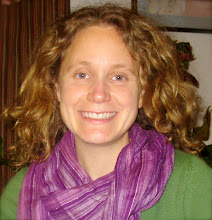Barbara makes a case that women, not men, are the oldest shamans and it's incorrect skeletal analysis and a history of archeology being a mostly male vocation that has led to misconceptions of the true history of healing around the world.
The book takes the reader on a journey throughout ancient cultures and modern villages where shamans, like midwifery, is a strongly feminine specialty. She also shares traditional practices of ancient people, like the Huichol tribe's practice of having the husband of a laboring woman's first child squat in the rafters with ropes attached to his testicles. As the woman goes into labor, she tugs on the tethers allowing her husband to share in her painful experience of childbirth. (To quote my husband, "That tribe is probably no longer.")
Below is a song from a shaman chanted while she was in an hallucinogenic trance. The first verse was recited in a feminine voice, the second verse was spoken in a stronger and more powerful masculine-sounding voice:
Woman who waits am I
Woman who divines am I
Woman of justice am I
Woman of law am I
Woman of the Southern Cross am I
Woman of the first star am I.
For I go up into the sky.
Lawyer woman am I.
Woman of transactions am I.
Mexican woman am I.
Woman like a clock am I.
Woman like an eagle am I.
Woman like an opossum am I.
Woman like a hunting dog am I.
Woman like a wolf am I.
I'll show my power!

No comments:
Post a Comment